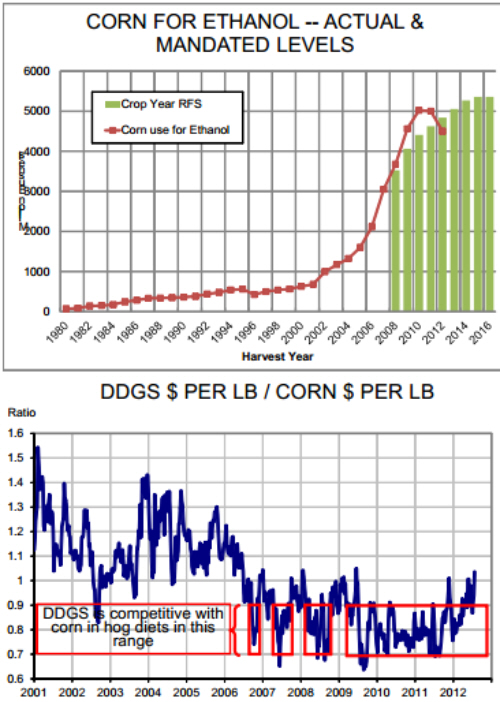



CME: Govt Purchases Meat to Stabilise Market
US - USDA announced on Monday that it would purchase up to $170 million of pork, lamb, chicken and catfish for federal food programs, write Steve Meyer and Len Steiner.
In a press release, the purchase was characterized “As
part of the Obama Administration’s commitment to do everything it can
to help farmers, ranchers, small businesses and communities being
impacted by the nation’s persistent drought.” The purchase breaks
down as up to $100 million of pork, $10 million of catfish, $50 million of
chicken and $10 million of lamb. Some of this product may go to food
banks. At least one story also mentioned that Department of Defense
would look at the possibility of pulling forward some purchases and
store product for later use. CME Group Lean Hogs futures traded up
more than $1.00/cwt pretty much across the board at times on Monday
but only October and December were able to hold those gains.
How much the mini-rally had to do with the USDA announcement is hard to judge. This purchase is, in volume terms, pretty inconsequential. While $100 million sounds like a huge number, it will only
buy about 107 million pounds of carcass-weight pork and we produced
408 million pounds last week! And USDA will not be buying carcassweight pork. They will be buying value-added products such as precooked sausage patties that will almost certainly cost more than yesterday’s cutout value of $92.36/cwt — meaning the quantity purchased
will actually be less than 107 million pounds. We do not want to sound
unappreciative but everyone must keep this in perspective! It is not
huge and it doesn’t fully address the issue of high feed costs and
doesn’t start to address the issue of feed availability next summer.
USDA is doing “everything it can,” of course, except
altering the renewable fuel standard requirement that 13.8 billion
gallons of ethanol be blended into gasoline in 2013 — a move
that many believe is necessary if feed supplies are to be sufficient.
In USDA’s defense, we all need to realize that the Secretary of
Agricultural really has no power to alter the RFS. That power resides
with the Administrator of the Environmental Protection Agency and
there is no requirement for her to do anything. The EPA secretary
only has the authority to change the RFS. Legislation is still pending
in Congress that would require action in the case of projected low year
-end stocks-to-use ratios.
Then there is the matter of whether changing the RFS requirement that 13.8 billion gallons of ethanol be blended into gasoline
in 2013 will actually reduce the amount of corn used by ethanol refineries. It is not clear that it would do so simply because the mandate
has not been binding in recent years and may not be binding this year
given the number of credits (called RINs) that were generated by “over
-blending” in years past.
Blenders have used ethanol because it was profitable to do
so, not because they were required to do so. Higher oil and gasoline
prices make this profit incentive stronger as does the fact that there is
a relatively new value driver for ethanol in gasoline: Octane enhancement. We aren’t exactly petroleum engineers but, as we understand it,
ethanol is a cost-effective way to increase the octane ratings of motor
fuels. As such, ethanol is deriving its value not just from its energy
content (which is about two-thirds that of gasoline) but its octane value
as well. The situation is analogous to what has happened to DDGS in
animal diets. From mid-2009 to late 2011, DDGS was priced primarily
as a corn replacement. Beginning early this year, it gained value due
to its relatively high protein content and the explosion of soybean meal
prices. The DDGS did not change but its source of value in diets did
and thus drove its price upward relative to its historical value supporter, corn. We expect DDGS to stay high relative to corn for a while.
The Farm Foundation is hosting a webinar at 10 a.m.
CDT on August 16 (this Thursday) that will address the topic
“Potential Impacts of a Waiver of Ethanol Blending Rules.” The
webinar will feature Drs. Wally Tyner and Chris Hurt of Purdue University. Our experience is that Neil Conklin (and before him Walt Armbruster) and the Farm Foundation usually do these things right so we
expect this webinar to be very enlightening!









